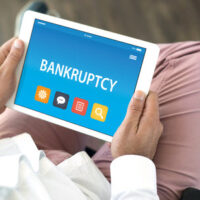3 Exit Ramps From the Road to Bankruptcy

Filing for bankruptcy protection can bring fast and significant relief from unaffordable debts, and everyone has the right to file for bankruptcy, but if it were as easy as it sounds, then everyone would do it. Even though the bankruptcy court accepts almost all filings and eventually discharges the applicants’ eligible debts, filing for bankruptcy has its risks and its disadvantages. For example, the bankruptcy court cannot discharge your alimony or child support debts; it can only discharge other debts to free up funds for you to pay your obligations to the family court. Furthermore, filing for bankruptcy costs money; there is a reason that peak season for bankruptcy filings is in the spring, when people have just received their income tax refunds. Likewise, bankruptcy has a negative effect on your credit score; it does not mean that you can never borrow again, but it does mean that you must rebuild your creditworthiness. In other words, filing for bankruptcy is not a decision to take lightly, and you should not do it until after you have carefully considered the alternatives. For help navigating the path to bankruptcy or finding an exit ramp, contact a Miami chapter 13 bankruptcy lawyer.
Negotiating With Creditors Outside of Court
You can get creditors to settle your debt for a lesser amount, or even just give you more time to pay, by negotiating with them directly. From a creditor’s perspective, debt balances are wishful thinking; they cannot guarantee that this is the amount you will end up paying. The reason that collection agencies exist is that creditors sell off debts for pennies on the dollar. It is even better, from their perspective, if you pay some of what you owe than if they must sell your debt at a rock bottom price.
Consolidating Your Debts
When you first learn about it in a personal finance class in high school, consolidating your debts seems like a silly idea. Why would someone take on new debts just to pay off their old debts? Why not just keep the debts you already have and pay them down as quickly as you can? Consolidating debt involves taking out a loan with a lower interest rate than that of your current debts. In other words, it costs less to take your time paying off the new debt, compared to the old debt.
Selling Assets and Downsizing Your Expenses
If you can afford to do this, the best option is to free up funds to pay down your debts by adjusting your financial situation. This is easiest if you have family nearby. For example, you can sell your car and share a car with a family member, provided that you live together or close enough to each other that this is feasible. Likewise, instead of paying rent for your own apartment, you can move in with a family member and share household expenses, if a family member has the space to take you in.
Work With a Debt Lawyer About Deciding Whether to File for Bankruptcy
A South Florida debt lawyer can help you decide which of the alternatives to bankruptcy, if any, is best for you. Contact Nowack & Olson, PLLC in Miami, Florida to discuss your case.
Source:
msn.com/en-us/money/personalfinance/thinking-about-filing-for-bankruptcy-explore-these-7-options-first/ar-AA1ox4Lh?ocid=msedgntp&pc=ACTS&cvid=feff5561a2fd45f7878c0f40c774d059&ei=49
